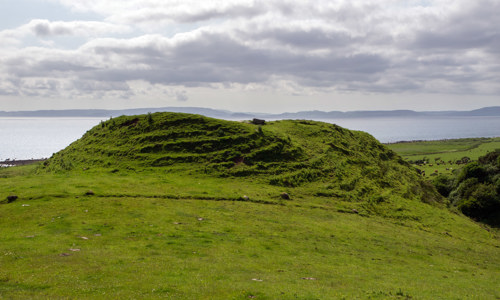History
Torrylin is a Clyde cairn, a kind of cairn found across south-west Scotland, particularly around the Firth of Clyde. They share the common characteristic of a crescent-shaped forecourt, framed by a façade of slender upright stones. Behind that was a rectangular burial chamber, divided into compartments by stone slabs.
Torrylin Cairn is much-disturbed. It was been robbed for stone, ploughed, and used for the dumping of field clearance stones. Today it’s considerably smaller than it once would have been, and lacks its forecourt and façade.
Use over the centuries
The cairn has been investigated a number of times by antiquarians and early archaeologists in the 1800s and in 1900. Excavations suggest that Torrylin was used over a long period. Bones of the departed were likely sorted and placed in specific areas of the tomb.
Other finds within the cairn included:
- four human skills and bones from several adults
- a fragmentary Neolithic lugged bowl
- a flint knife
- a variety of animal bones
Some of the animal bones suggest ritual feasting may have taken place at the site. Fox and otter bones found here indicate the cairn had also been used as a den by local animals.
Archaeologists have found hearths and other features in the forecourts at other Clyde Cairns, such as Cairn Holy I in Galloway. This suggests they acted as a focus for rituals associated with new interments.
An excavator writing in 1873 says Arran’s burial cairns were regarded with trepidation by the islanders. A local tradition holds that the farmer responsible for quarrying Torrylin met a particularly grim end.
The excavator writes: “This tradition is well-known in Arran, and has tended to deepen the feelings of superstitious dread with which these monuments are generally regarded.”













